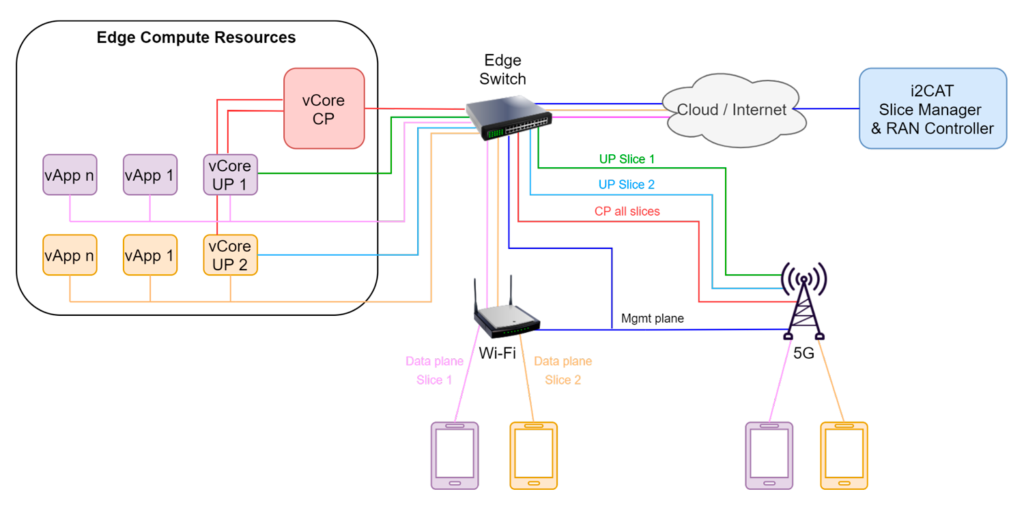5G Network slicing approach by i2CAT
Network slicing is widely considered as one of the main drivers fostering the adoption of 5G technologies. In particular, the unique capabilities offered by network slices are expected to play a relevant role in the path towards new business models based on infrastructure sharing (such as Neutral Hosting) and on-demand provisioning of Network as a Service (NaaS) solutions. While there is a general consensus about the need of network slices and the potential offered by enabling technologies such as SDN and NFV, there still room for novel solutions and improvements in this arena in order to fully unleash their foreseen potential. As such, the realization of management solutions able to cope with the inherent complexity of network slices is one of the main lines of efforts being pushed forward nowadays by the research and industry communities.
The participation of i2CAT Foundation in 5G-VICTORI is mainly focused on providing End-to-End network slices in multi-RAT deployments. In particular, within the Bristol Cluster, two of the research areas of i2CAT, the Mobile Wireless Internet and the Software Networks groups, will bring together their SDN-enabled RAN Controller and Slice Manager solutions, to provision E2E slices in one of the sites of the Digital Mobility Use Case. This joint solution was developed and successfully tested within the scope of the 5GCity H2020 Project, being able to manage 4G and Wi-Fi multi-RAT slices by applying RAN sharing solutions (i.e. Multi Operator Core Network and virtual SSID, respectively).
In 5G-VICTORI, this approach will be evolved to support 5G NSA and SA technologies, being integrated with the E2E 5GUK and the 5G-VICTORI Operating System (5G-VIOS) platforms. In the case of 5G NSA, it will make use of the CUPS paradigm to slice the User Plane of the 4G Core (i.e. the SGW-u and PGW-u) according to the APN of the UEs. In 5G SA scenarios, the objective is to follow a similar approach, but using the 5G slice identifiers (i.e. S-NSSAI) to select a specific User Plane functions (i.e. SMF and UPF) of the 5G Core. As depicted in the figure below, in both cases the data traffic of different applications, tenants or user groups of different slices will be isolated and directed to its specific Edge and Cloud resources, regardless of the RAT technology being used.








